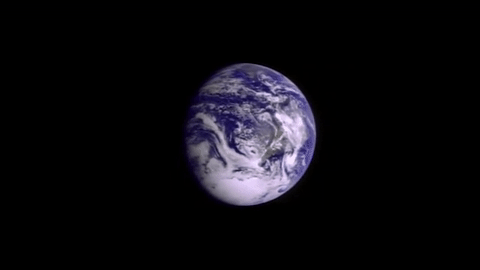How To Get An Alien To Abduct You
how to get an alien to abduct you
More Posts from Intergalacticnerd and Others

NGC 660. A rare galaxy type, polar ring galaxies have a substantial population of stars, gas, and dust orbiting in rings nearly perpendicular to the plane of a flat galactic disk. Only about a dozen of such galaxies have been discovered
Source: https://imgur.com/z73B8o3
7 Facts That Will Make You Feel Very Small

Earth, our home planet, is the fifth largest planet in our solar system and the only planet we know of where life exists. Even though Earth seems extremely large to us, it is actually a tiny spec in the vast expanse of the universe. Here are 7 space facts that will make you feel very small.

1. Our sun is one of at least 100 BILLION stars, just in the Milky Way. Scientists calculate that there are at least 100 billion galaxies in the observable universe, each one brimming with stars. There are more stars than grains of sand on all of Earth’s beaches combined.
In 1995, the first planet beyond our solar system was discovered. Now, thousands of planets orbiting sun-like stars have been discovered, also known as exoplanets.

2. The Milky Way is a huge city of stars, so big that even at the speed of light (which is fast!), it would take 100,000 years to travel across it.

3. Roughly 70% of the universe is made of dark energy. Dark matter makes up about 25%. The rest — everything on Earth, everything ever observed with all of our instruments, all normal matter adds up to less than 5% of the universe.

4. If the sun were as tall as a typical front door, Earth would be the size of a nickel.

5. The sun accounts for almost all of the mass in our solar system. Leaving .2% for all the planets and everything else.

6. Edwin Hubble discovered that the Universe is expanding and that at one point in time (14 billion years ago) the universe was all collected in just one point of space.

7. Four American spacecraft are headed out of our solar system to what scientists call interstellar space. Voyager 1 is the farthest out — more than 11 billion miles from our sun. It was the first manmade object to leave our solar system. Voyager 2, is speeding along at more than 39,000 mph, but will still take more than 296,000 years to pass Sirius, the brightest star in our night sky.
Feeling small yet? Here’s a tool that will show you just how tiny we are compared to everything else out there: http://imagine.gsfc.nasa.gov/features/cosmic/earth.html
Make sure to follow us on Tumblr for your regular dose of space: http://nasa.tumblr.com

M104, the Sombrero Galaxy
Credit: Jimmy Walker
Cassini Top 10 Images and Science Results of 2015
As our Cassini spacecraft enters its final 20 months before its plunge into Saturn, the mission’s science team has selected their top 10 images from 2015 (above), a year of historic discoveries, as well as the top science results (below). Take a look:
1. First Deep Seafloor Hydrothermal Vents Found Beyond Earth

Cassini found the first evidence of active hot-water chemistry beyond planet Earth. An extensive, four-year analysis of data from the spacecraft, computer simulations and laboratory experiments led researchers to the conclusion the tiny silica (SiCO2) grains most likely form when hot water containing dissolved minerals from the moon’s rocky interior travels upward, coming into contact with cooler water.
2. Global Ocean Beneath Enceladus’ Surface

A global ocean lies beneath the icy crust of Saturn’s geologically active moon Enceladus. Scientists analyzed more than seven years’ worth of images of Enceladus taken by the spacecraft, which has been orbiting Saturn since mid-2004. As a result, they found Enceladus has a tiny, but measurable wobble as it orbits Saturn. This proves that there must be a global layer of liquid separating the surface from the core.
3. Titan Observed Outside of Saturnian Magnetosphere

During Cassini’s flyby of Titan, the giant moon happened to be on the sunward side of Saturn when a powerful outburst of solar activity reached the planet. The strong surge in the solar wind so compressed the sun-facing side of Saturn’s magnetosphere that the bubble’s outer edge was pushed inside the orbit of Titan. This left the moon exposed to, and unprotected from, the raging stream of energetic solar particles. The region of space dominated by Saturn’s magnetic field is called the magnetosphere.
4. Density of a Ring Particles May Indicate Recent Origins

Saturn’s A ring was found to be warmer than expected at the planet’s equinox, and also had an unusually large thermal asymmetry about the equinox. This could be due to the A ring being mostly composed of denser particles made primarily of solid ice, with a thin top layer of fluffy regolith.
5. Titan Southern Polar Ice Cloud

Scientists have detected a monstrous new cloud of frozen compounds in Titan’s low- to mid-stratosphere – a stable atmospheric region above the troposphere, or active weather layer.
6. Curtain Vents on Enceladus?

New research using data from Cassini suggests most of the eruptions from Saturn’s moon Enceladus might actually be diffuse curtains rather than discrete jets. Many features that appear to be individuals jets of material erupting along the length of prominent “tiger stripe” fractures in the moon’s south polar region might be phantoms created by an optical illusion, according to the new study.
7. Discovery of Tethys Red Arcs

Like graffiti sprayed by an unknown artist, unexplained arc-shaped, reddish streaks are visible on the surface of Saturn’s icy moon Tethys. The origin of the features and their reddish color is a mystery to scientists.
8. Saturn’s 30-year Giant Storms Powered by Water Convection

Changes in temperature and the composition of the hydrogen-laden air within the remnants of a giant storm system on Saturn reveal that air was lofted more than 120 miles in altitude from the deeper water condensation levels.
9. Seasonal Change Seen at Saturn’s Poles

Saturn’s polar regions have displayed extreme seasonal changes during Cassini’s decade-long watch, providing the most comprehensive view ever obtained of seasonal change on a giant planet.
10. Huygens Probe Imaging Mosaic of Titan’s Surface and Descent Movie

Ten years ago, an explorer from Earth, the Huygens probe, was released from the Cassini spacecraft and parachuted into the haze of an alien moon toward an uncertain fate. After a gentle descent lasting more than two hours, it landed with a thud on a frigid floodplain on Titan, surrounded by icy cobblestones.
Make sure to follow us on Tumblr for your regular dose of space: http://nasa.tumblr.com

M45, The Pleiades Star Cluster


Shuttle Plume Shadow Points to the Moon
In early 2001 during a launch of Atlantis, the Sun, Earth, Moon, and rocket were all properly aligned for this photogenic coincidence. First, for the space shuttle’s plume to cast a long shadow, the time of day must be either near sunrise or sunset. Only then will the shadow be its longest and extend all the way to the horizon. Finally, during a Full Moon, the Sun and Moon are on opposite sides of the sky. Just after sunset, for example, the Sun is slightly below the horizon, and, in the other direction, the Moon is slightly above the horizon. Therefore, as Atlantis blasted off, just after sunset, its shadow projected away from the Sun toward the opposite horizon, where the Full Moon just happened to be.
Image Credit: Pat McCracken, NASA
(via NASA)

A photo of Saturn. Took by Cassini with COISS on May 30, 2008 at 11:52:37. Detail page on OPUS database.
What music do you listen to most?
A wide variety. I created this Spotify playlist of the songs I’ve listened to most during my Year in Space.
-
 everlovingdeer liked this · 5 months ago
everlovingdeer liked this · 5 months ago -
 imagineblaqkttv reblogged this · 5 months ago
imagineblaqkttv reblogged this · 5 months ago -
 imagineblaqkttv liked this · 5 months ago
imagineblaqkttv liked this · 5 months ago -
 make-the-dead-love reblogged this · 5 months ago
make-the-dead-love reblogged this · 5 months ago -
 wander7ust reblogged this · 5 months ago
wander7ust reblogged this · 5 months ago -
 clara-maybe reblogged this · 5 months ago
clara-maybe reblogged this · 5 months ago -
 claramaybe liked this · 5 months ago
claramaybe liked this · 5 months ago -
 isabela-merceds reblogged this · 5 months ago
isabela-merceds reblogged this · 5 months ago -
 phillipbrooks reblogged this · 5 months ago
phillipbrooks reblogged this · 5 months ago -
 alicedyers reblogged this · 6 months ago
alicedyers reblogged this · 6 months ago -
 alicedyers liked this · 6 months ago
alicedyers liked this · 6 months ago -
 leaveanotewhen reblogged this · 6 months ago
leaveanotewhen reblogged this · 6 months ago -
 mrsanakinskywalker419 reblogged this · 6 months ago
mrsanakinskywalker419 reblogged this · 6 months ago -
 mrsanakinskywalker419 liked this · 6 months ago
mrsanakinskywalker419 liked this · 6 months ago -
 henley-reeves reblogged this · 6 months ago
henley-reeves reblogged this · 6 months ago -
 kichedatabase reblogged this · 1 year ago
kichedatabase reblogged this · 1 year ago -
 gay-aunt-jackie liked this · 2 years ago
gay-aunt-jackie liked this · 2 years ago -
 neartheshoree reblogged this · 3 years ago
neartheshoree reblogged this · 3 years ago -
 neartheshoree liked this · 3 years ago
neartheshoree liked this · 3 years ago -
 milk-karton-kids reblogged this · 3 years ago
milk-karton-kids reblogged this · 3 years ago -
 voiics reblogged this · 4 years ago
voiics reblogged this · 4 years ago -
 veniteavedere liked this · 5 years ago
veniteavedere liked this · 5 years ago -
 nomoreorganssorry reblogged this · 5 years ago
nomoreorganssorry reblogged this · 5 years ago -
 nomoreorganssorry liked this · 5 years ago
nomoreorganssorry liked this · 5 years ago -
 rav-io reblogged this · 5 years ago
rav-io reblogged this · 5 years ago -
 celeste-nox reblogged this · 5 years ago
celeste-nox reblogged this · 5 years ago -
 celeste-nox liked this · 5 years ago
celeste-nox liked this · 5 years ago -
 whoa-its-dani liked this · 5 years ago
whoa-its-dani liked this · 5 years ago -
 pyrovania reblogged this · 5 years ago
pyrovania reblogged this · 5 years ago -
 pyrovania liked this · 5 years ago
pyrovania liked this · 5 years ago -
 rav-io liked this · 5 years ago
rav-io liked this · 5 years ago -
 chibirisa20 liked this · 5 years ago
chibirisa20 liked this · 5 years ago -
 assasinglasses liked this · 5 years ago
assasinglasses liked this · 5 years ago -
 zankaboo reblogged this · 5 years ago
zankaboo reblogged this · 5 years ago -
 zankaboo liked this · 5 years ago
zankaboo liked this · 5 years ago -
 spinnin-burnice liked this · 5 years ago
spinnin-burnice liked this · 5 years ago
"Astronomy compels the soul to look upwards and leads us from this world to another." - Plato
147 posts